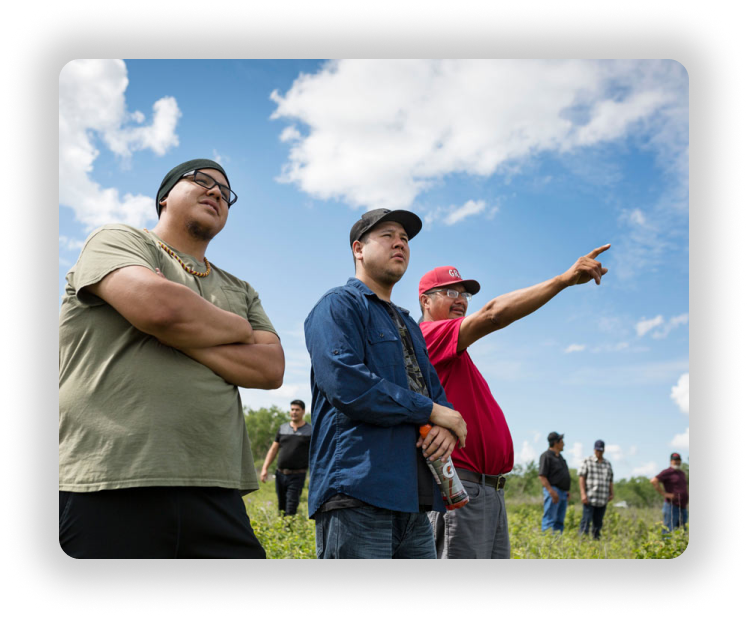Developing Reserves
Manitoba First Nations have historically practiced responsible and sustainable land management. In the modern era, the practices have evolved to include urban reserves.

Treaties In Manitoba
There are seven Treaties with First Nations in Manitoba: Treaties 1, 2, 3, 4, 5, 6 and 10. Treaties 1 through 5 cover the majority of Manitoba. They were negotiated and entered into by Treaty Commissioners on behalf of the Crown and First Nations leaders.
The Treaties are sacred documents governing the relationship between sovereign Indigenous nations and the Crown as represented by the Government of Canada. They set out promises, obligations and benefits for the First Nations and the Crown.
Through these Treaties, First Nations sought to safeguard their languages, traditions and cultures while sharing lands with Canadians.
In the decades following the signing of the treaties, many promises and obligations were broken to First Nations. Today, through ongoing negotiation and legal precedents, First Nations and the Crown are attempting to fulfill the spirit of those Treaties.
One of the most important aspects of this process of reconciliation is in the area of land management. First Nations rely on land management practices to responsibly and sustainably develop reserve lands.
Many First Nations are allowed to create urban reserves and land set apart by the Crown within or adjacent to an urban municipality for the use and benefit of a First Nation.
Urban Reserves
Urban reserves are an important step forward in the economic reconciliation between First Nations and Canada.
How Are Urban Reserves Created?
There are two types of urban reserves. Some are created when a metropolitan area grows into an existing First Nation reserve. Others are newly created as a way for First Nations to access larger, urban markets and improve the economic opportunities for their people.
Creating an urban reserve begins with a First Nation acquiring land in a municipality. They can then ask the Canadian government to transfer that land to reserve status.
Once that occurs, the First Nation negotiates a municipal services agreement with the city or town where its new urban reserve is located. Those agreements address various issues including fees for municipal services, tax-loss compensation and dispute resolution procedures.
Why Urban Reserves Make Sense?
Urban reserves are an important step forward in the economic reconciliation between First Nations and Canada. Many traditional reserves are located on economically marginal land. It can be difficult to provide basic services to people living on reserve and even harder to provide access to the generally high standard of living most Canadians enjoy.
Urban reserves allow First Nations to generate income, compete in global markets and provide jobs for their people.
Urban reserves also benefit the municipalities they occupy in numerous ways. First, they usually represent significant investments that bring economic activity to towns and cities through jobs, increased spending, and higher municipal levies.
Land Management On Urban Reserve
The practice of land management is vital for the success of urban reserves. Land managers represent their First Nations and work closely with municipal, provincial and federal governments to bring urban reserves to life.
They must follow the bylaws and regulations set down by all four levels of government and ensure the new urban reserves meet each other’s expectations. In this way, the development of urban reserves must clear much higher regulatory hurdles than typical municipal developments.
This means ensuring everything from municipal zoning bylaws to provincial conservation and environmental regulations and federal protocols governing urban reserves in general.

Land Management On Reserve
Land management is a vital skill for every First Nation to have. Land managers are highly skilled advisors to chiefs and councils who can make recommendations for responsible and sustainable development.
Land managers can advise on any number of kinds of projects including:
- Roads and other reserve infrastructure
- Resource development including mines
- Commercial development including stores and office buildings
- Industrial development including industrial parks
- First Nations government development includes parks, sports and recreation facilities, government buildings and more.
Land managers must follow development regulations set out by various levels of government.
